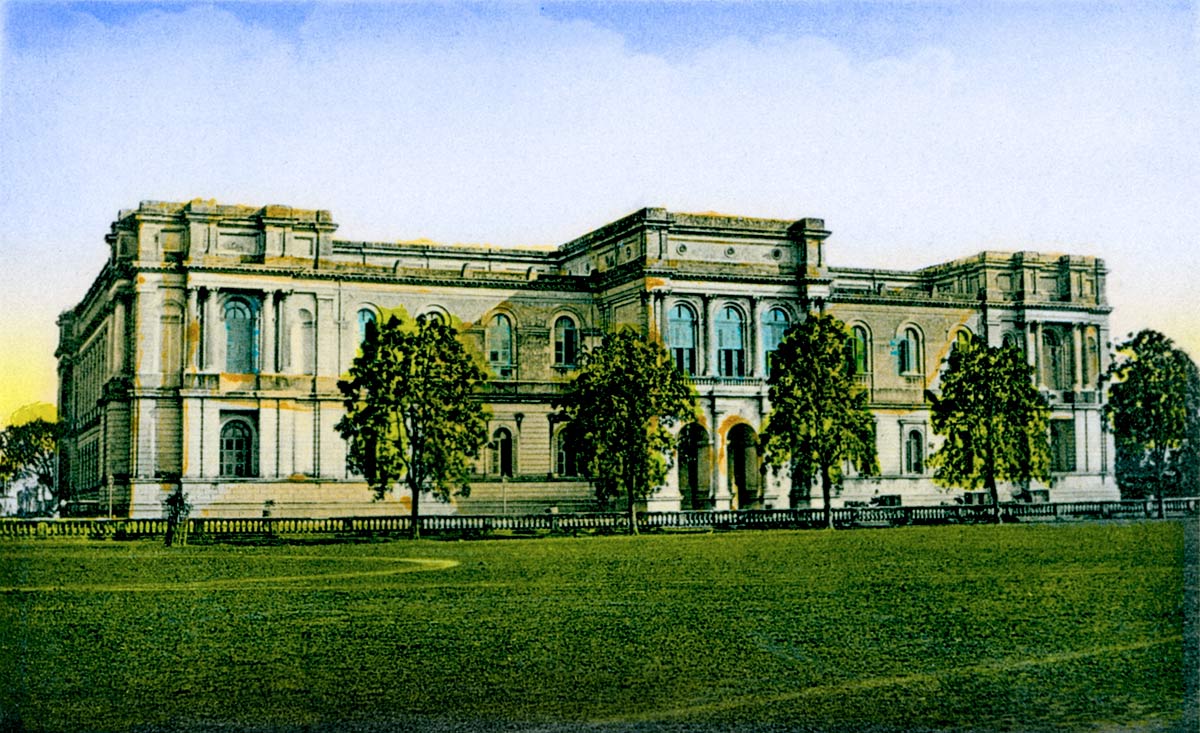The Calcutta Museum was founded by a Danish botanist, Nathaniel Wallich, in 1814. It shifted to the present site in the 1870s. The architect of Calcutta Museum was W. L. Granvil who also designed the Calcutta General Post Office and the Calcutta High Court. It is apparently one of the oldest institutions of its kind in Asia. Nirad Chaudhuri writes of this important temple of his childhood:
"The central point in this facade of Calcutta was certainly the high pile of the Indian Museum, rather dull-looking from the outside bat always enlivened by the thought of what it contained within. There was no place in Calcutta, unless it was the zoological gardens of Alipur, of which I was more fond. The huge galleries, each at least one hundred feet long, forty feet wide, and as many high, were always reeking of the sweating upcountry men who visited the museum as a matter of duty and trudged through the galleries as solemnly and steadily as my Kishorganj peasants marching to the field of Id prayers. They never stopped before anything unless they saw some visitor taking particular interest in one or other of the exhibits or comparing something in a book with the objects. Then they crowded round that visitor and asphyxiated him with their body odour. It was, however, impossible to get angry with them. They were as natural and primitive as the exhibits, though not as monumental. In the entrance hall were the bull and lion capitals of the pillars of Asoka, in the hall to the right were the highly ornamental red sandstone railings of the Bharhut Stupa, and in the hall to the left the Siwalik fossils together with At? skeletons of the huge Hasti Ganesa or Elephas Antiquus Namadicus Falc. of the Nerbudda valley. It could be said that in these galleries :fi the Indian Museum were represented all the previous empires in India from that of the gigantic prehistoric elephants to that of Asoka the Buddist and Samudragupta the Vishnuite." (Autobiography of an Unknown Indian, 1951, Addison-Wesley edition, pp. 263-4)

